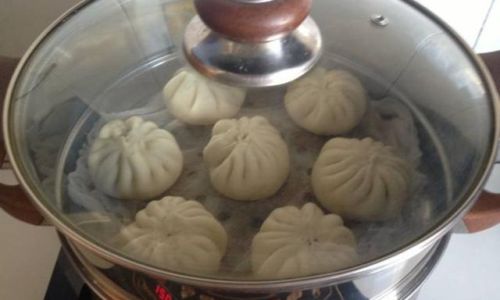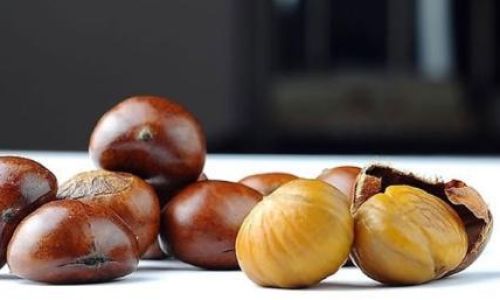Table of content
The art of making buns—whether steamed, baked, or fried—is a culinary tradition celebrated across cultures. From the fluffy mantou of China to the buttery dinner rolls of the West, dough-based treats hold a special place in global cuisine. However, a common dilemma arises for home cooks and professional bakers alike: Can unsteamed buns be refrigerated before cooking? This question touches on food safety, dough chemistry, and practical meal preparation. This article explores the science behind dough storage, the risks and benefits of refrigeration, and expert-recommended alternatives to ensure your buns rise to perfection.
The Role of Yeast and Temperature in Dough
To understand whether unsteamed buns can be refrigerated, one must first grasp the role of yeast in dough fermentation. Yeast, a single-celled fungus, consumes sugars in the dough and produces carbon dioxide gas and alcohol. This process, known as fermentation, creates air pockets that give buns their light, airy texture. Temperature is a critical factor in this reaction. Yeast thrives in warm environments (around 75–85°F or 24–29°C), where it actively multiplies and releases gas. At cooler temperatures, yeast activity slows, and at freezing temperatures, it becomes dormant.
Refrigeration (typically 35–40°F or 2–4°C) significantly slows yeast metabolism. While this can extend the dough’s lifespan, it also alters the dough’s structure. Gluten, the protein network that gives dough its elasticity, tightens in cold temperatures, potentially making the dough stiff and harder to shape. Additionally, prolonged refrigeration may lead to overproofing if the dough is left to ferment for too long, resulting in collapsed buns with a dense crumb.

The Case Against Refrigerating Unsteamed Buns
Yeast Fatigue and Weak Rise
When uncooked buns are placed in the refrigerator, the cold environment halts yeast activity temporarily. However, once the dough is removed and warmed, the yeast may not fully recover. This can lead to buns that rise poorly during steaming or baking, resulting in a dense, gummy texture. Professional bakers often advise against refrigerating yeast-leavened doughs unless absolutely necessary, as the risk of compromised texture outweighs the convenience.
Condensation and Soggy Dough
Refrigerators are humid environments. When warm dough is placed inside, moisture from the dough condenses on the surface, creating a wet layer. This excess moisture can dissolve the dry flour coating on buns (if used), causing them to stick to parchment paper or steamer baskets. Soggy dough also loses its structural integrity, increasing the likelihood of deformation during cooking.
Flavor Degradation
Fermentation is not just about leavening—it also develops flavor. Slow, controlled fermentation at room temperature allows enzymes to break down starches into sugars, enhancing the buns’ sweetness and complexity. Refrigeration slows this process, potentially resulting in bland-tasting buns. While some artisan bread recipes use “cold fermentation” for flavor development, these methods typically involve fully shaped loaves and shorter refrigeration times (12–24 hours), which may not apply to delicate bun doughs.
When Refrigeration Might Be Necessary
Despite the drawbacks, there are scenarios where refrigerating unsteamed buns could be a last resort:
- Meal Prep for Busy Schedules: If you lack time to cook immediately after shaping, refrigeration can pause the proofing process.
- Hot Climates: In kitchens without air conditioning, dough may overproof rapidly at room temperature. Refrigeration can prevent this during warm months.
- Multi-Stage Recipes: Some recipes call for partial proofing followed by chilling before final shaping or cooking.
Best Practices for Refrigerating Unsteamed Buns
If you must refrigerate your dough, follow these steps to minimize damage:
- Limit Refrigeration Time: Aim for no more than 8–12 hours. Beyond this, yeast activity may not recover fully.
- Wrap Tightly: Seal the dough in an airtight container or plastic wrap to prevent dryness and absorbent of refrigerator odors.
- Allow Gradual Warming: Remove the dough 1–2 hours before cooking to let it reach room temperature. This jumpstarts yeast activity.
- Adjust Cooking Time: Refrigerated buns may require slightly longer steaming or baking to ensure they cook through.
Superior Alternatives to Refrigeration
Freezing: The Better Long-Term Solution
Freezing unsteamed buns is a far more reliable method for preserving dough quality. Here’s why:
- Yeast Dormancy: At 0°F (-18°C), yeast becomes completely inactive, halting fermentation without killing the organisms (unlike refrigeration, which weakens them).
- Texture Preservation: Properly frozen dough retains its gluten structure and moisture, resulting in buns that rise beautifully when cooked.
- Longevity: Frozen dough can last 1–3 months, while refrigerated dough is best used within a day.
How to Freeze Unsteamed Buns:

- Shape the buns and place them on a parchment-lined tray.
- Freeze until solid (1–2 hours), then transfer to a freezer-safe bag.
- To cook, steam or bake directly from frozen; no thawing needed.
Countertop Proofing with Controlled Conditions
For optimal results, proof buns at room temperature in a draft-free area. Use these tricks to extend proofing time without refrigeration:
- Cool Water in the Dough: Use chilled water (around 68°F/20°C) when mixing ingredients to slow initial yeast activity.
- Proof in the Oven (Off): Place a tray of hot water in the oven to create a warm, humid environment (80–85°F/27–29°C).
- Monitor Closely: Check dough every 30 minutes to avoid overproofing.
Signs of Spoiled or Overproofed Dough
Even with proper storage, dough can deteriorate. Watch for these red flags:
- Grayish Discoloration: Indicative of bacterial growth (rare in low-sugar doughs but possible in enriched recipes with dairy or eggs).
- Shrinkage When Cooked: Overproofed dough collapses as gases escape during cooking.
- Gummy Texture: Caused by incomplete gluten breakdown or overmixing.
The Science of Reviving Refrigerated Dough
If you’ve already refrigerated your buns and notice poor rising, all is not lost. Try these fixes:
- Warm Water Bath: Place the sealed dough container in a bowl of warm (not hot) water for 10 minutes to gently raise its temperature.
- Add Fresh Yeast: If the dough is severely underproofed, knead in a pinch of instant yeast before shaping.
- Increase Cooking Heat: A slightly higher steaming or baking temperature can compensate for weak yeast activity.
Cultural Perspectives on Dough Storage
Traditional Chinese bakers, who perfected the art of bao and mantou, rarely refrigerate uncooked dough. Instead, they rely on fresh preparation and timing to coincide with meals. In contrast, Western bread bakers sometimes use “retarded dough” (refrigerated overnight) to enhance flavor, but this technique is less common in delicate bun recipes. The key difference lies in hydration levels: Bread doughs (60–75% hydration) tolerate cold better than bun doughs (50–60% hydration), which are prone to drying out.
Conclusion: To Refrigerate or Not to Refrigerate?
The answer hinges on your priorities. If convenience trumps texture, refrigerating unsteamed buns for a few hours is acceptable—provided you follow best practices. However, for the fluffiest, most flavorful results, prioritize fresh dough or freezing. Remember that baking is as much a science as an art, and understanding how temperature interacts with ingredients empowers you to make informed decisions in the kitchen.
In the end, whether you’re a home cook whipping up a quick snack or a professional catering to a crowd, the golden rule remains: Treat your dough with care, and it will reward you with buns that are as delightful to eat as they are to behold.





0 comments